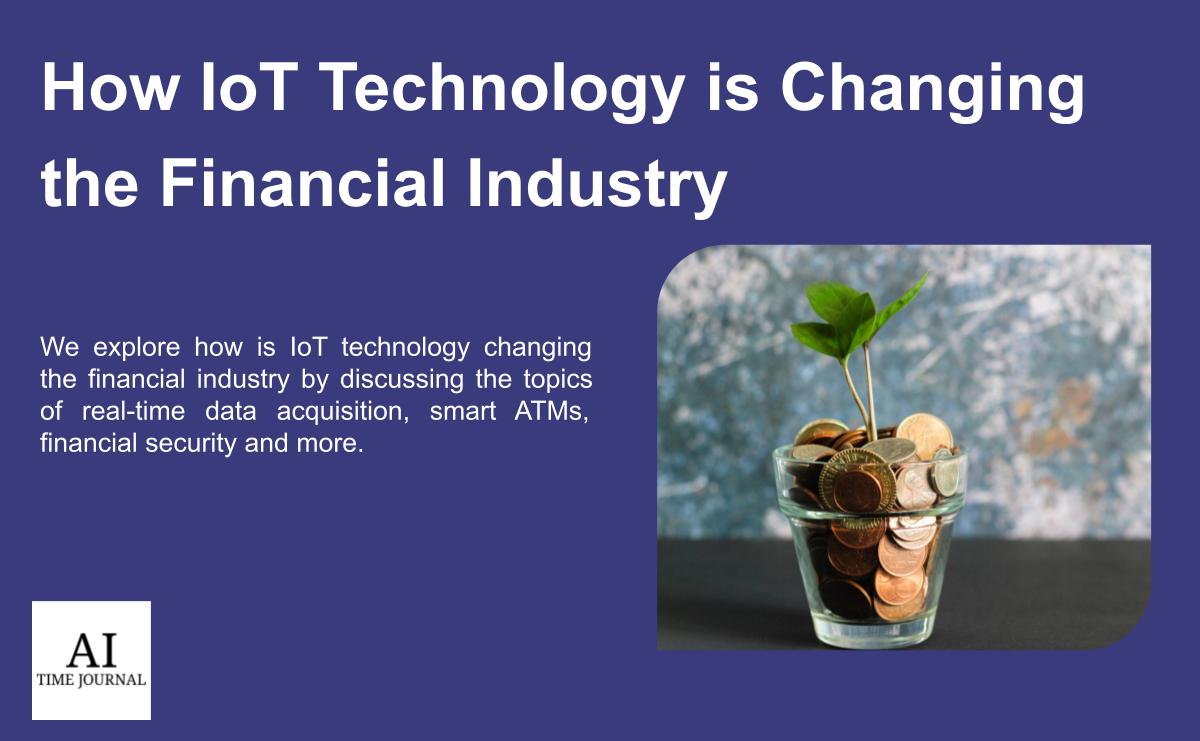
What is IoT Technology?
The Internet of Things (IoT) is a digital network whose infrastructure is built into physical objects or items we typically regard as arbitrary or day-to-day. These ‘things’ can encompass even the most rudimentary household items such as thermostats and kitchen appliances to large-scale industrial apparatuses, or contactless credit cards in the case of the financial industry.
IoT technology functions via embedded sensors and miniature computational processing devices that facilitate and streamline communication between people, processes, and other devices contained within the network. Seeing as the sensor-technology industry has reached a stage at which energy-efficient products can be obtained at a low cost, the implementation of IoT devices throughout various domains is becoming more widespread.
The network is enabled by a variety of already existing technologies. The current prevalence and development of Cloud Computing have allowed IoT users to easily scale their implementation of said technologies at a low cost. Moreover, the already existing digital infrastructure provided by the internet imbues IoT technology with heightened connective abilities, especially with respect to the Cloud and digital information storage.
Moreover, developments in Machine learning, along with the digital information storage capacities of the Cloud, have allowed businesses to conduct large-scale data analytics that facilitates better and more accurate consumer insight. Importantly, while IoT technologies themselves benefit from data, they also produce it, thereby maintaining the positive feedback loop that constitutes Big-Data.
Real-Time Data Acquisition
IoT-powered real-time data acquisition provides a number of benefits in the financial industry. Business and financial institutions can use IoT technology, such as wearable devices and smartphones to gain a deeper understanding of their consumers’ sentiments and market habits.
When used in conjunction with Machine Learning, in-depth predictive analysis of IoT data reveals prominent patterns in consumer spending, interests, demographics, social networks, and much more, all of which can be factored into the financial decision-making process to increase efficiency and accuracy.
Moreover, IoT asset management will allow businesses to maximize their return on investment by reducing engagement with clients or potential business partners with poor credit. By gathering real-time insight into potential clients’ assets, businesses can identify which clients are high-risk.
IoT technology also allows companies to track their employee’s hours and monitor work ethic and efficiency through wearable devices such as smartwatches, as well as any other IoT devices (e.g. Smart ATMs) that are linked to the institution’s network. In fact, financial institutions can configure their IoT devices to send automated alerts, in real-time, when they are under threat of fraud or hacking.
Smart ATMs
Smart ATMs, in principle, are not very different from our current ATMs. They still function in the same way, by prompting users to insert their relevant bank card, provide their pin, and subsequently withdraw the amount of money they require. While current ATMs are useful, they are difficult and expensive to maintain from the banking perspective while also suffering from a variety of security concerns involving fraud and identity theft.
When an ATM encounters functional problems, banks typically have to send a technician to the machine in question to verify, confirm, and resolve the specific issue causing the problem. This is time-consuming, expensive, and often requires an additional individual, trained in security, to be present during servicing.
Smart ATMs, when they encounter malfunctions, as long as they are not mechanical, can have their software rebooted and/or updated remotely from the bank in question, insofar as there still exists a wireless connection between the banking provider and the device. This also allows banks to hire small specialized teams of technicians that streamline the repair process with their expertise.
On the other hand, users benefit from smart ATMs due to their heightened security protocol, which reduces the risk of identity theft and fraud. Some banking providers have installed biometric identification or facial recognition systems that verify specific user transactions using a double-authentication procedure. In fact, it is possible that as facial recognition systems become more widely implemented and advanced, users will no longer require a card to withdraw money.
Moreover, this system would instill security provisions that allow banks to combat the practice of synthetic identity fraud, a type of identity fraud in which criminals construct a novel digital identity that cannot be traced to any real individual.
Improve Financial Security and Fraud Prevention
One of the most prevalent issues in finance revolves around fraud prevention, which can be achieved through the implementation of adequate and adaptable security protocols. IoT devices, such as smartwatches and phones, as well as contactless cards, have now allowed customers to begin making payments without having to pass through an intermediary verification system.
From an auditing perspective, financial institutions can track and identify each individual payment that is being made, where it has been made, and who it is coming from. Accountants would no longer have to deal with an intricate payment web that is difficult to decipher and would be easily able to identify the dynamics of individual chains of transactions. This would also result in lower error rates and increased efficiency on behalf of accounting professionals.
Accountants and financial security specialists can also use IoT device data in conjunction with Machine Learning techniques to identify fraudulent spending or purchasing patterns. By applying pattern recognition and classification algorithms that are trained to point out unusual, potentially fraudulent behavior, accountants can triangulate relevant data points involving IoT-driven spending and purchasing to uncover malicious activity.
Device-to-Device Communication
Device-to-Device communication (D2D) already exists independently of IoT technology. Have you ever Airdropped a friend a photo? If yes, then you have likely witnessed one of the simple benefits of D2D communication.
IoT technology, however, takes D2D communication to the next level by providing it with the critical digital infrastructure needed to maximize its efficiency and use at scale.
Let’s say a bank wants to link all of its smart ATMs in a network so that it can conduct security and maintenance checks at the end of each day remotely. The bank does so by designing a specific signal that is sent to the first ATM in the network, which, if it is secure and does not have any software malfunctions, instantaneously sends the same ping to the next ATM, and so on. If there is an ATM that has suffered a security breach, a separate signal is instantly sent to the bank indicating that there is a problem, while the other signal continues through the network from ATM to ATM until the process is done.
This example illustrates not only how IoT-based D2D communication can be highly useful in the financial industry, but also how easily it could be implemented throughout a breadth of disparate industries.
